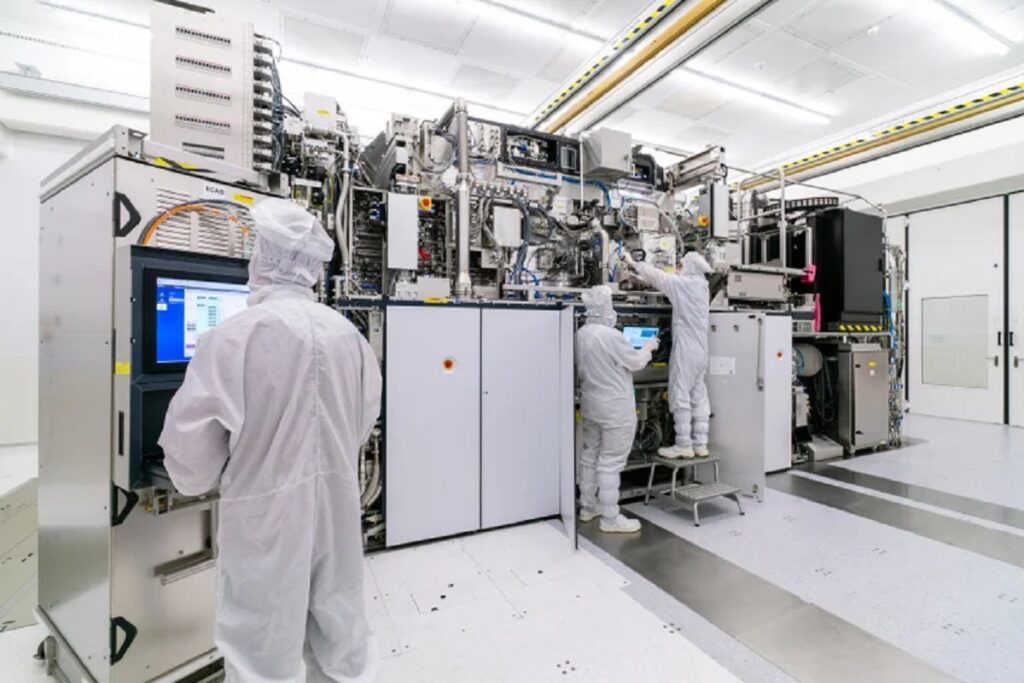In the high-stakes world of semiconductor manufacturing, control over the technology used to create the latest, most powerful chips is a game-changer. Recently, the Netherlands has become a central player in a heated global battle, teaming up with the US to effectively limit China’s access to state-of-the-art chip-making machines. This move represents a significant blow to China’s ambitions in tech, particularly when it comes to cutting-edge semiconductors, an industry that is crucial for military and economic dominance.
The Powerhouse Behind Modern Chipmaking: ASML

The unsung hero behind this technological battle is ASML, a company based in the Netherlands that holds the key to the world’s most advanced semiconductor manufacturing technology. If you’ve ever wondered how companies like Intel, TSMC, or GlobalFoundries are able to produce the next generation of microchips, the answer lies in the machines built by ASML.
ASML’s extreme ultraviolet (EUV) lithography machines are the only ones capable of creating the tiny, intricate circuits needed for modern semiconductors. While other companies like Nikon and Canon once flirted with the idea of making similar technology, the huge investment and complexity of scaling such technology led them to step back, leaving ASML as the undisputed leader in this field. Today, no other company comes close to matching ASML’s expertise and machinery.
How This Affects China’s Chip Industry
For China, the situation is even more dire. While ASML has never sold its latest EUV machines to Chinese companies, it has provided slightly older versions that still offer significant chip-making capabilities. However, that’s all about to change. As of next summer, these slightly outdated machines will no longer be available to Chinese companies either. This move is part of a broader effort led by the US to limit China’s technological advancement, particularly in industries critical to national security, such as artificial intelligence and military technology.
The official justification for these export bans is that advanced chips are essential for military applications. While this is true, the underlying concern is that these measures will significantly delay or even derail China’s ability to compete in the global tech race. The ban effectively hampers China’s progress in areas like AI and high-performance computing, putting its entire tech sector at a disadvantage.
The US Push and the Growing Tension
The US has consistently used its global influence to ensure that its technological dominance is maintained, and it’s using its power to apply pressure on the Netherlands and other countries that could potentially assist China in building up its semiconductor manufacturing capabilities. The fact that ASML’s machines are being restricted under these new policies highlights just how deeply the US is embedded in the global semiconductor supply chain.
China’s government has been vocal about its frustration with these tactics. In a recent statement, Mao Ning, the spokesperson for China’s Ministry of Foreign Affairs, expressed the country’s hope that the Netherlands would adopt a more objective stance and not simply follow the US’ lead. The remarks reflect a growing sense of injustice and frustration in China, as it tries to assert its independence in the face of foreign interference.
China’s Growing Independence in Chipmaking
Despite these challenges, China is not standing still. The country is pouring significant resources into developing its own chipmaking technologies, including creating new graphics cards like the BR104 and the Moore Threads MTT S80. While these products are still in the early stages and face compatibility issues, they showcase China’s determination to become self-reliant in the semiconductor sector.
China’s 3D5000 processor, with up to 32 cores running at 2.2 GHz, is another testament to the country’s growing capabilities. These advancements may not yet rival those of the US or Taiwan in terms of performance, but with massive investments and a national strategy to build up its own semiconductor industry, China is positioning itself to eventually break free from reliance on foreign technology.
The Future of Semiconductor Power
The escalating tensions between the US, Netherlands, and China underscore the geopolitical importance of semiconductors. These tiny chips power everything from smartphones to military drones, and the race to develop them has become a key element of international power struggles. As China ramps up its efforts to become fully independent in semiconductor production, the world is watching closely.
While the US and its allies might see their actions as a way to curb China’s influence in key industries, the reality is that China’s path to independence is becoming increasingly plausible. With the scale of investments being made in semiconductor research and development, it might not be too long before China can match or even surpass the US in chipmaking capabilities, rendering these geopolitical maneuvers obsolete.
Ultimately, the battle over chip technology is about more than just economic dominance—it’s about securing the future of technological development and military superiority. Whether China can break free from these technological restrictions remains to be seen, but one thing is clear: semiconductors are at the heart of the global power struggle, and the US’s influence over the industry is beginning to face significant challenges.






